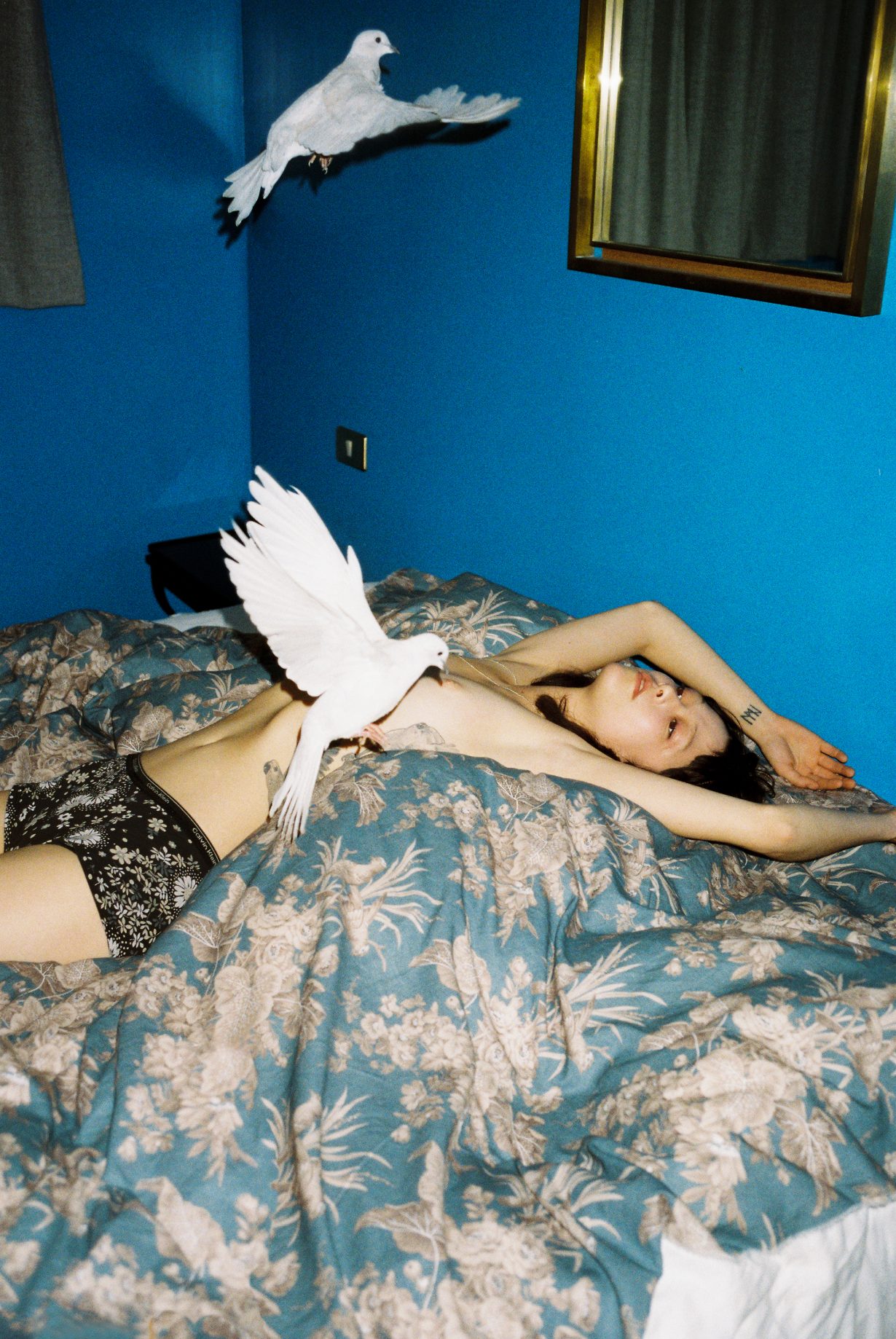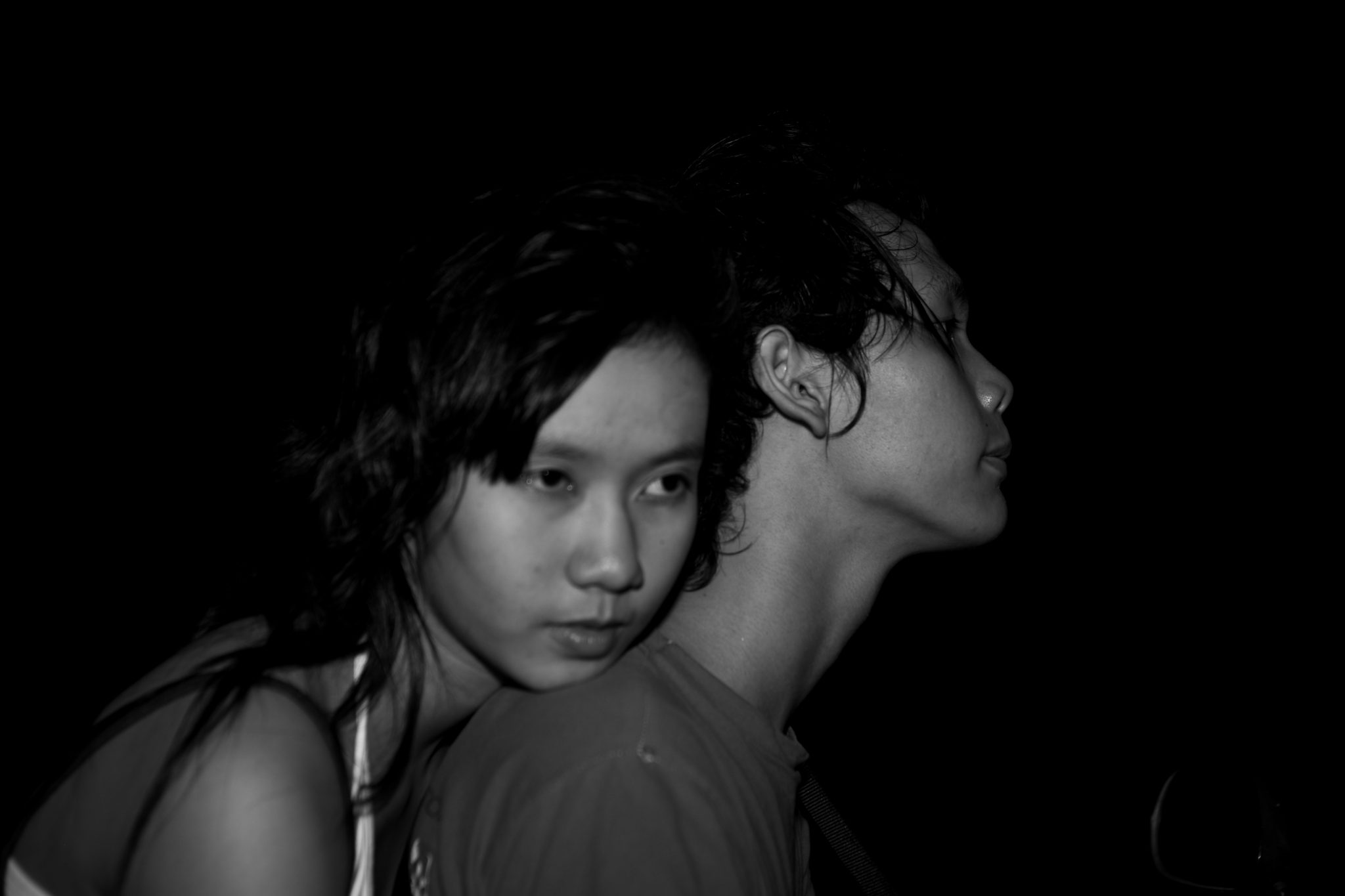From youthful rebellion to the fragility of old age, this exhibition explores the full spectrum of life’s emotions through the dual lens of joy and regret
This is an exhibition of work by eight Asian artists who explore love and loss – from romantic relationships to meditations on the ephemerality of life – in a bittersweet way.
The exhibition title is a modified line from Canadian poet Lisa Robertson’s ‘Face/’ (2010); the line that follows it – ‘What I want to do here is infiltrate sincerity’ – suggests that rather than wishing to have loved or worked more, Robertson instead places desire and labour into a field of poetic play, and in so doing both highlights and bridges the tension that exists between these generally opposed modes of existence. Which is a path this show also follows.
Tao Hui’s video installation Hello, Finale! (2017) is set up as a grid of nine screens arranged in rows of three; in front of each screen is the kind of armchair you’d find in an office lobby. You sit down, put on headphones and watch various characters talking on the phone to an unseen listener. Each screen offers a different narrative focused on issues of loss and desire. In one, a woman kneels on the floor grieving for something or someone; in another, a child is walking home after having been bullied at school. The actors speak Japanese, and the experience as a whole is like channel-surfing through the climactic scenes of a series of teledramas. The real twist in the tale is that, in fact, these seemingly fictional scenes are based on aspects of the artist’s life in China and the country’s news reports.

Lieko Shiga’s series of monochromatic photographs Blind Date (2009), which pictures couples riding, sometimes recklessly, on motorbikes in Bangkok, suggests the contradictory states of speed and stillness. The drivers look away from the camera, while the passengers (often women) look towards the viewer with inscrutable expressions. With their bodies pressed tightly against the driver, the passengers appear simultaneously tender and trusting; yet their piercing gazes directed at the camera convey a tension between the bike riders and the photographer (and by extension, the viewer). Meanwhile, Pixy Liao’s photo series Experimental Relationship (2007–) shows a different kind of pairing, one that revels in playful and humorous acts of submission and domination. Liao makes portraits with her younger boyfriend wherein they both perform as subjects; though she is often pictured holding a remote shutter release. Her partner, sometimes naked, is draped around her or displayed next to her as if a decorative object – subverting traditionally gendered roles. Finally, Lin Zhipeng (aka No. 233 – a reference to the officer number assigned to the hopelessly romantic policeman in Wong Kar-Wai’s Chungking Express, 1994) captures the lifestyle of Chinese youth during the 1990s and their sense of sexual freedom. In Tail (2020) a cat’s tail emerges from between someone’s naked thighs. In Mushroom (2020), dirt and mushrooms are piled on top of a nude person’s chest. These images show youthful rebellion, intimacy and sexuality at play.

Besides love, the exhibition also takes on the bigger questions of life and death, and what makes a meaningful existence. Hai-Hsin Huang’s painting The Future is Hot #6 (2021) reflects on how we are living in an era of epic environmental denial. His painting shows two people lounging, with a fluffy dog, by a hotel pool while a mountainous forest burns behind them. Rinko Kawauchi’s Cui Cui (2005), which features photographs that depict her family’s everyday life over 13 years, is more panoramic, covering the broader sweep of the cycles of birth and death, and moments of transcendental beauty: a baby held in loving arms; prayer offerings; a grandfather in hospital; strawberries in a bowl with ice. The powerful images take a leaf from the title, Cui Cui, an onomatopoeic Japanese phrase referring to the sound of sparrows, irreducible to language, yet nonetheless part of the ineffable fabric of life.
Daisuke Kosugi’s 49-minute video A False Weight (2019) presents the framework of the body as a failing structure: it follows Tadashi, a retired architect and bodybuilder adapting to a chronic illness that causes muscle degeneration. It is based on the experiences of Kosugi’s own father, Masanori Kosugi, and his determination to perform basic tasks – getting out of a chair, having a meal. As we watch Tadashi we watch labour inscribed as a fundamental part of existence; how the body becomes a fragile tool but the ways in which the spirit can overcome that too.
I have not loved (enough or worked) at Art Gallery of Western Australia, Perth, 18 November 2022 – 23 April 2023
